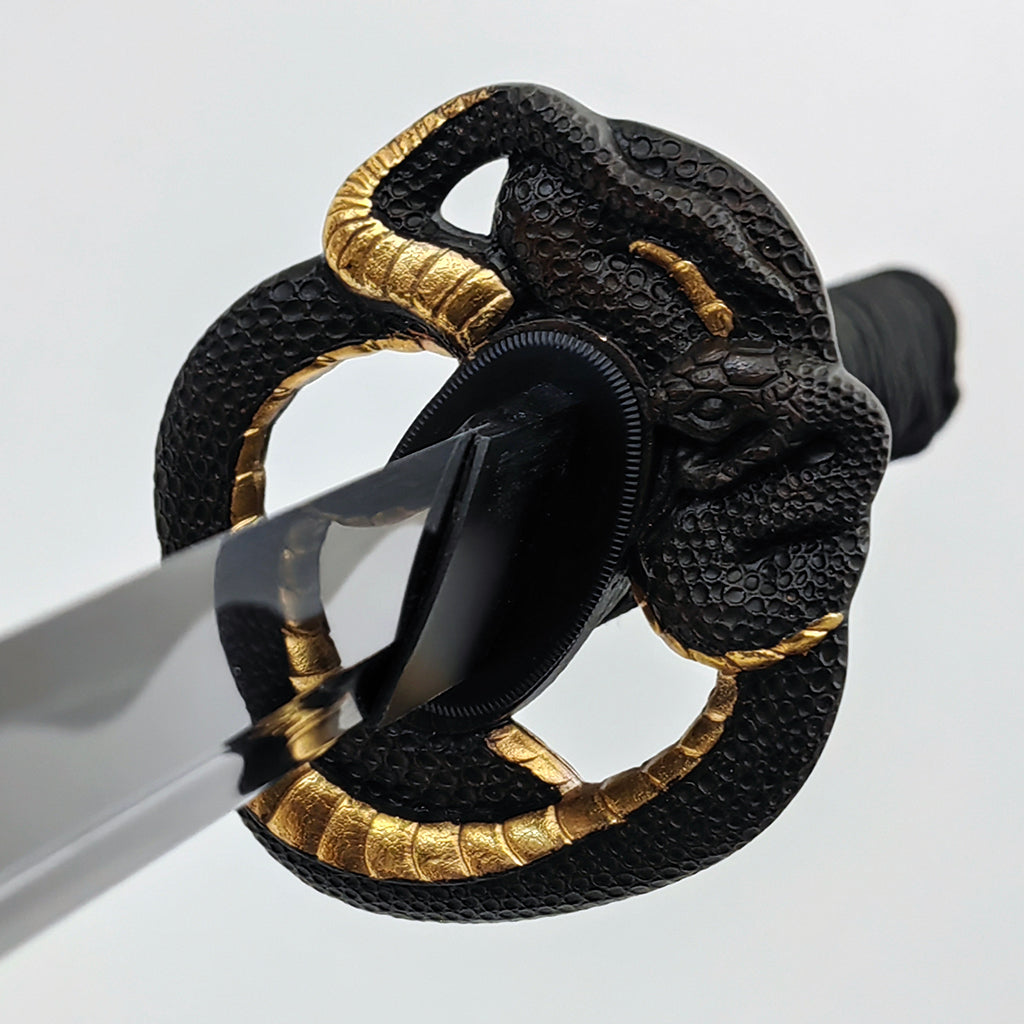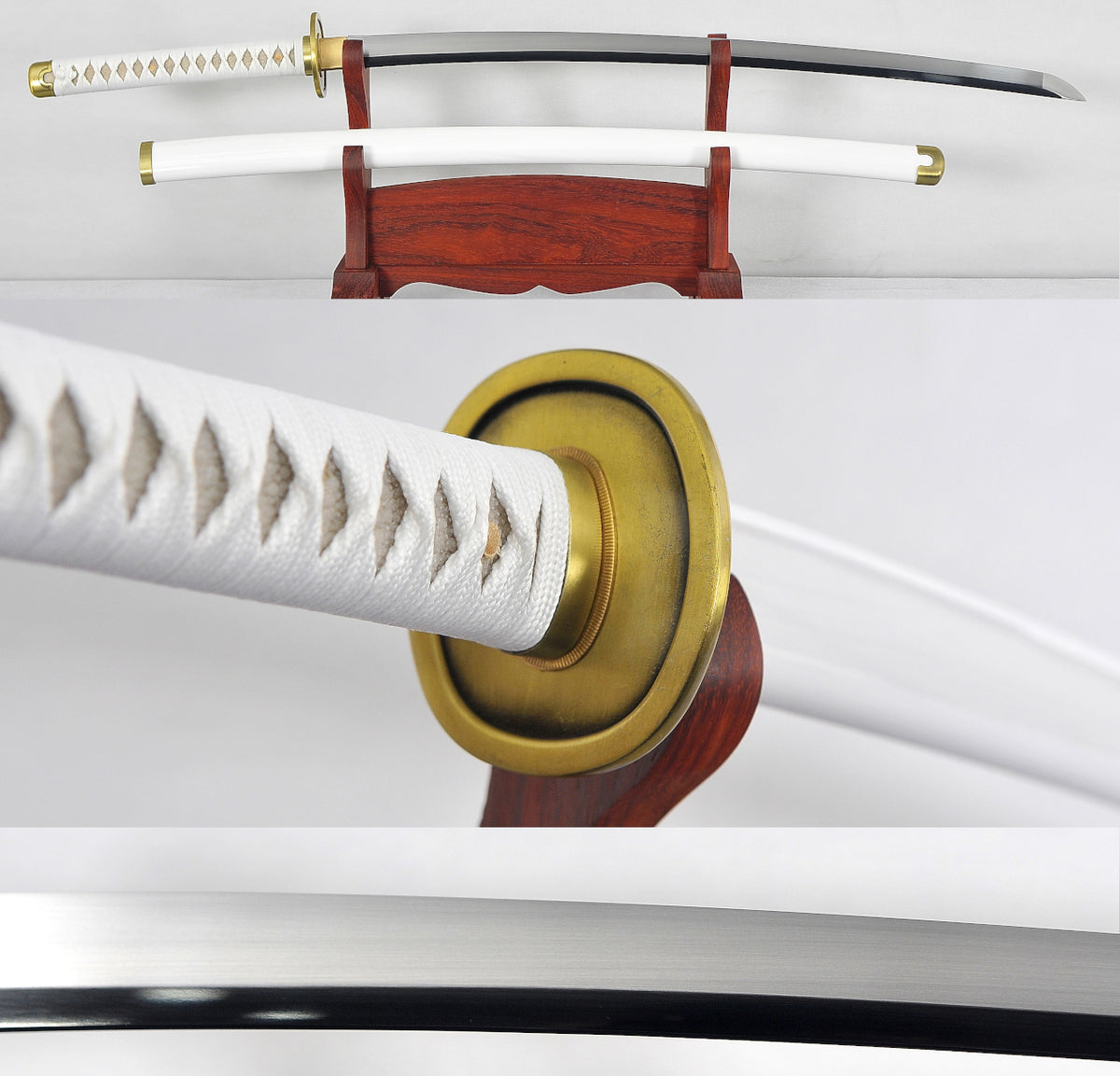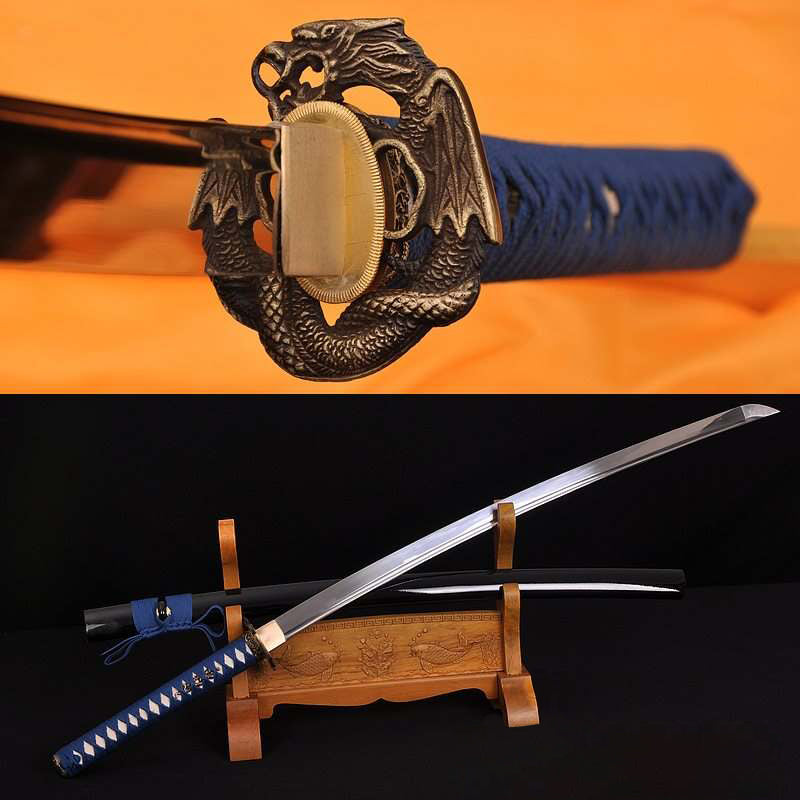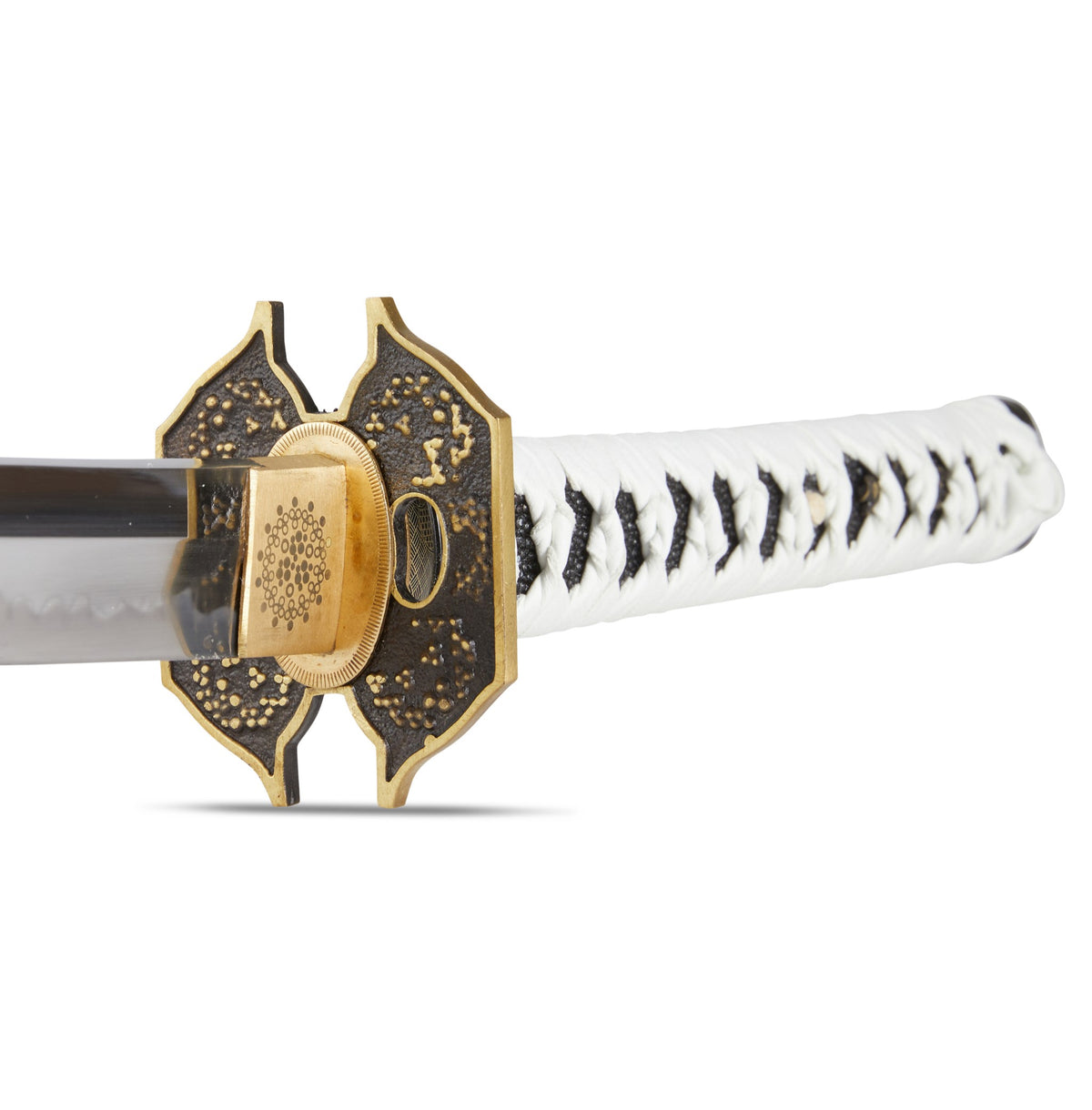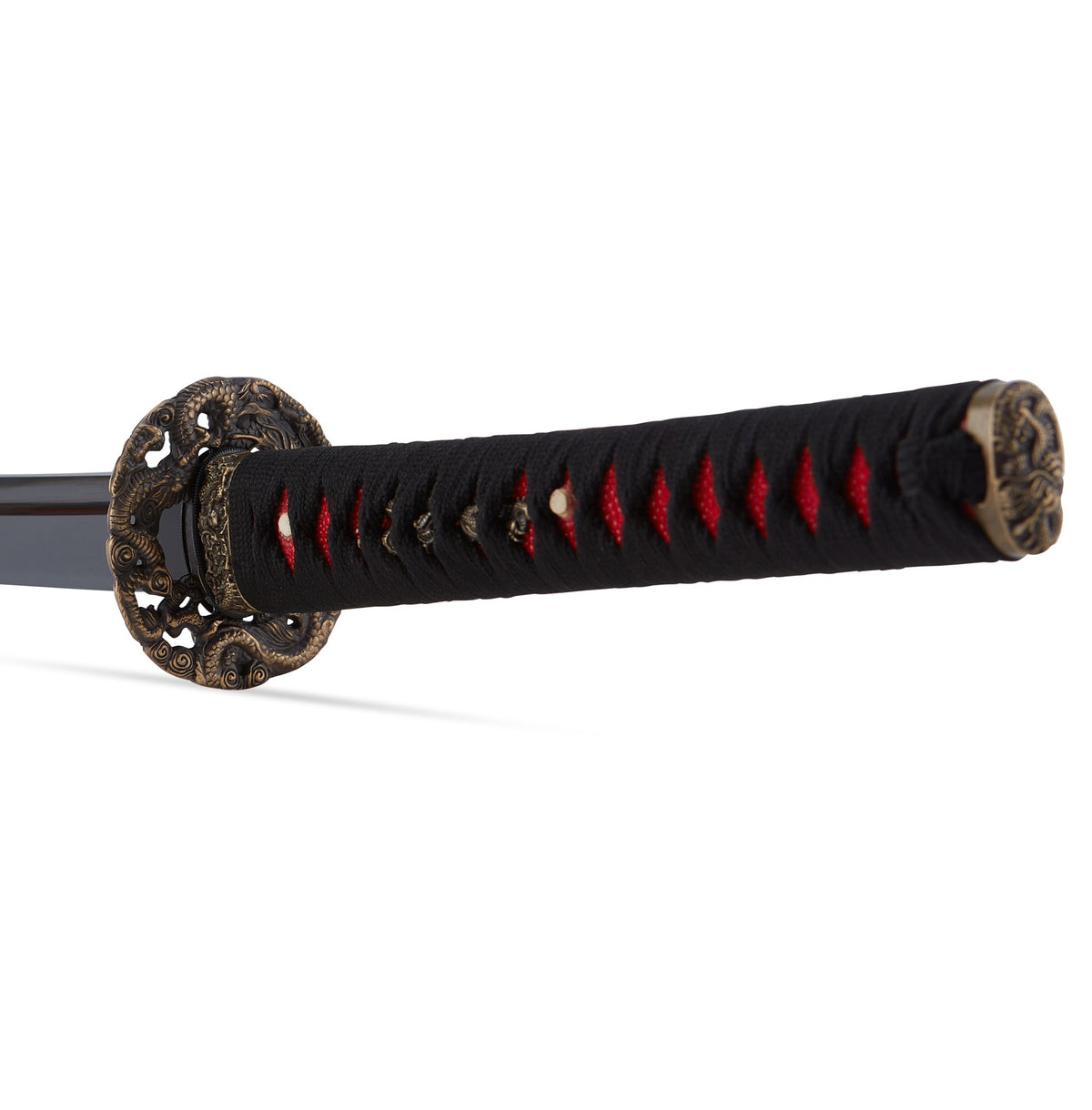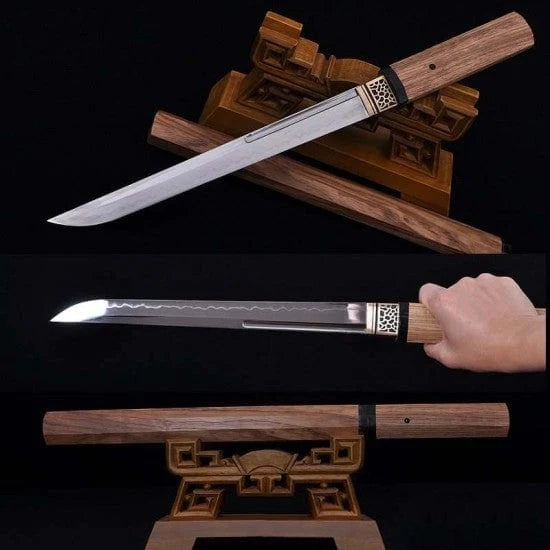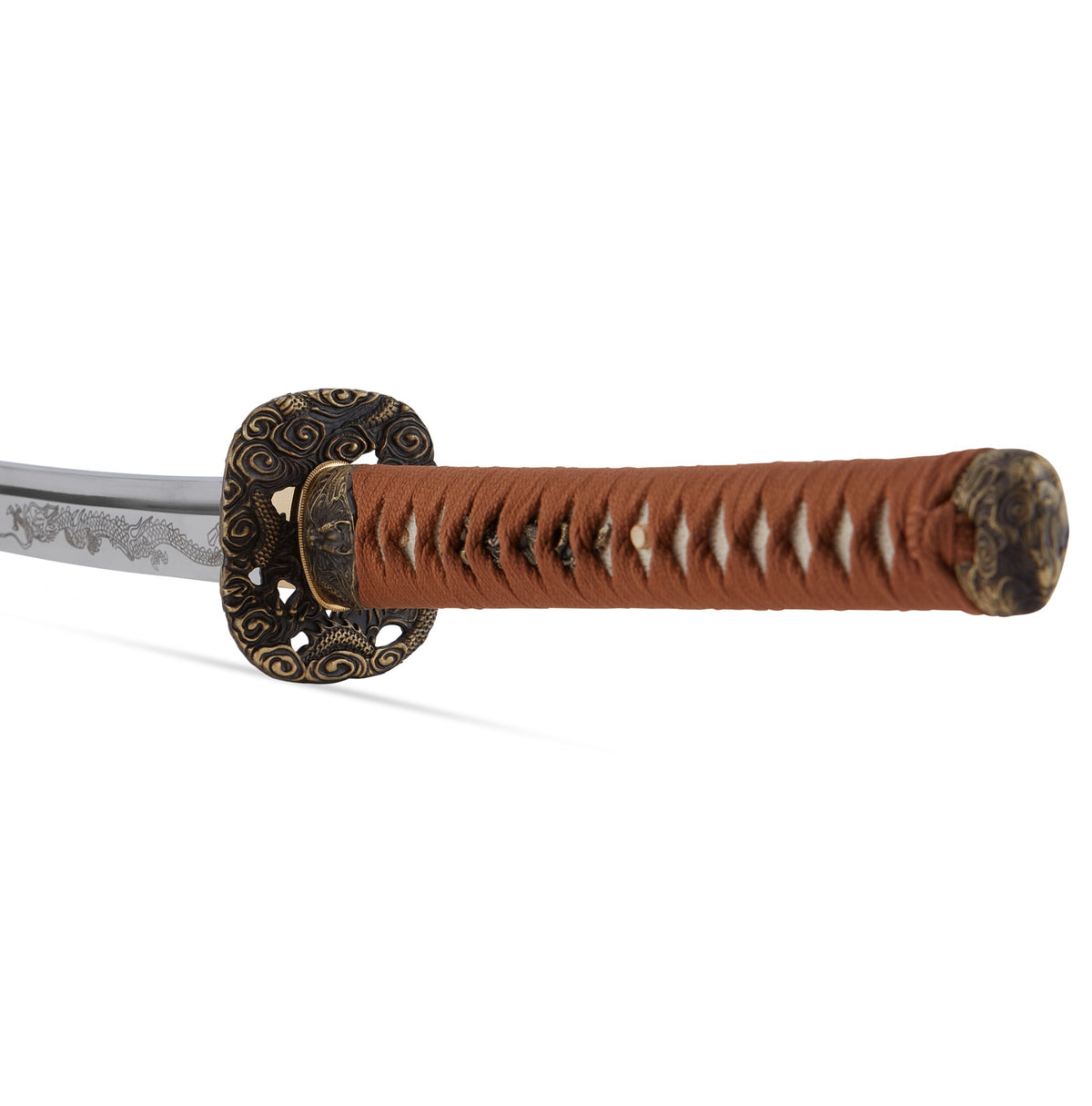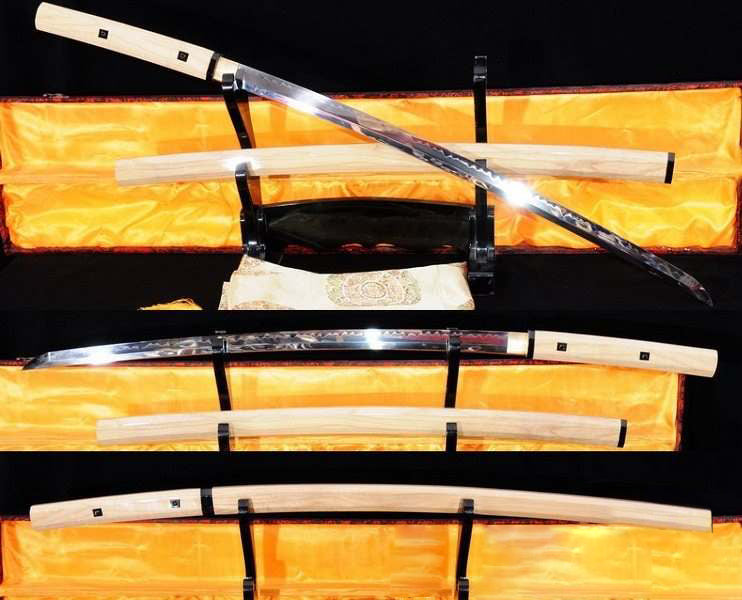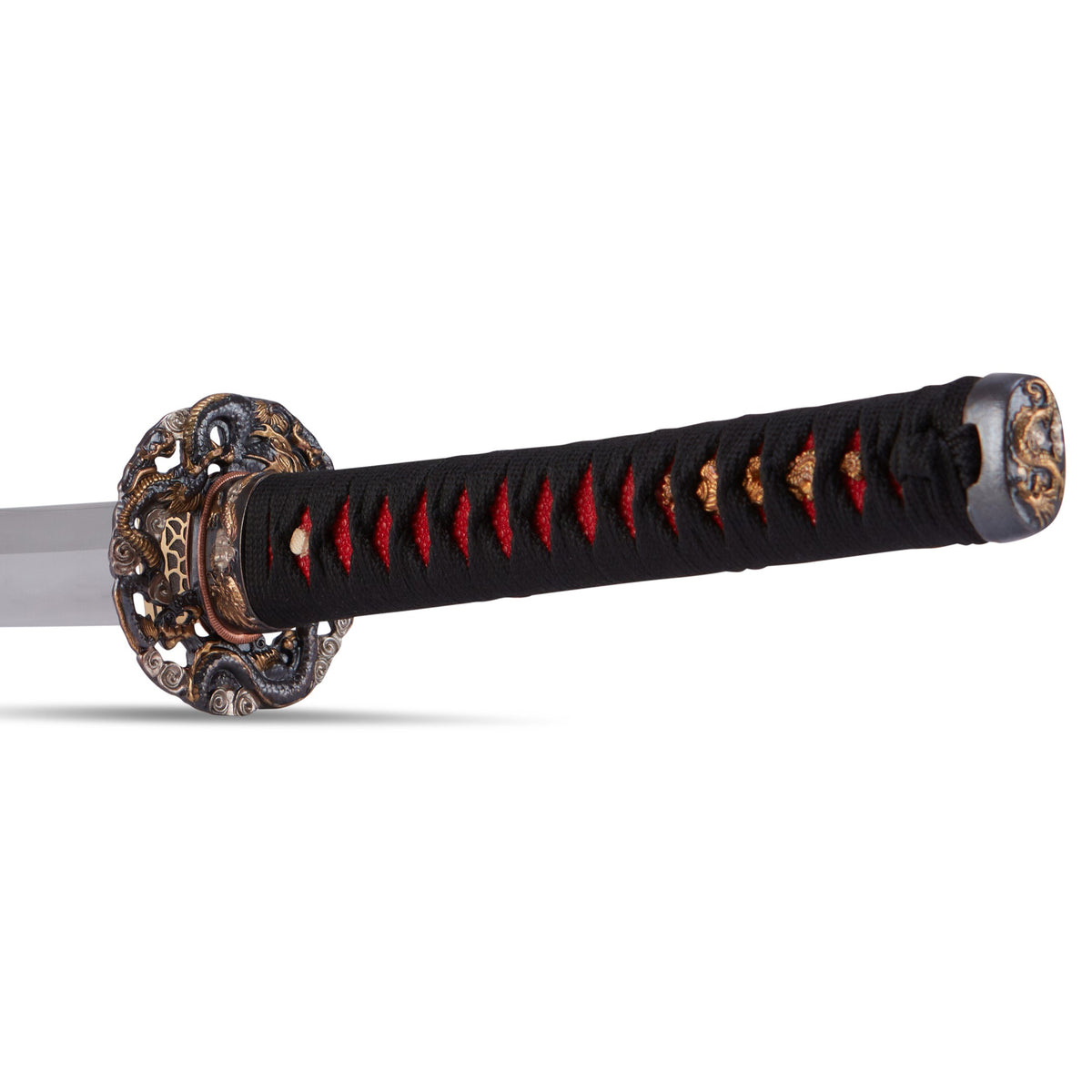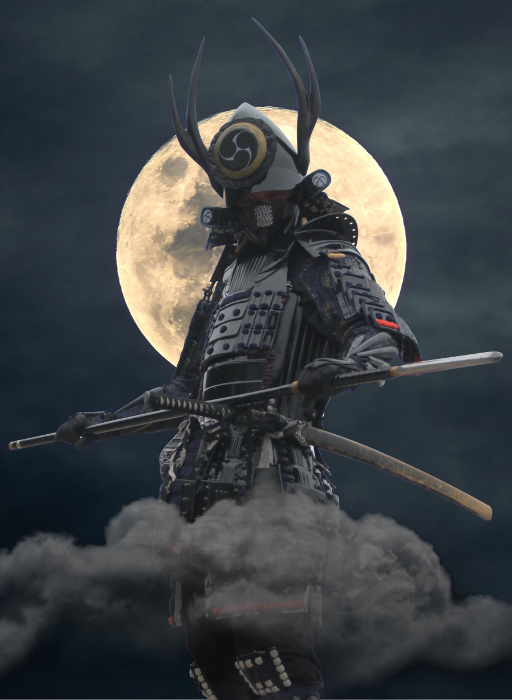How Sharp are Samurai Swords?
 Our team at Swords of Northshire, assure you that Samurai Swords are extremely sharp. The sword has ever been a part of the history and psyche of the Japanese. Legend has it that the Sun Goddess furnished a sword, jewel and a mirror to her grandson, to confer upon him the lawfulness and power to rule. Since then, the Japanese sword has continually evolved, with the pollination of techniques and ideas from different countries at different times. With the inception of Samurai Swords, Japanese swords and sword-making thrilled the entire world. These souls of the Samurais have lived on ever since, and today, exude their auras, in the hands of passionate connoisseurs, collectors, and kengo practitioners.
Our team at Swords of Northshire, assure you that Samurai Swords are extremely sharp. The sword has ever been a part of the history and psyche of the Japanese. Legend has it that the Sun Goddess furnished a sword, jewel and a mirror to her grandson, to confer upon him the lawfulness and power to rule. Since then, the Japanese sword has continually evolved, with the pollination of techniques and ideas from different countries at different times. With the inception of Samurai Swords, Japanese swords and sword-making thrilled the entire world. These souls of the Samurais have lived on ever since, and today, exude their auras, in the hands of passionate connoisseurs, collectors, and kengo practitioners.
A samurai was not any bushi or warrior. In the simplest terms, a samurai was a monk with a sword. He understood the brutality of war and the fragility of life, and represented an objective simultaneity of intuition and action. The sword was the manifestation of this union of his physical and spiritual development. A samurai's emblem was his couple of swords- the longer katana (24 inches to 30 inches long) and the wakizashi (about 18 inches long).
Interesting Facts about Samurai Swords
The Samurai sword was and is the coming together of art, craft and science in the hands of a master smith. As much as the sword itself, the process of sword-making today means reminiscence and awe. Even today, to be qualified as an independent sword maker, students have to serve long apprenticeships, living in their master's homes, learning all they can. The Ministry of Culture of Japan regulates the processes and promotes interaction among the stakeholders and preservation of the swords.
Traditionally, sword-making, the polishing of the sword, habaki-making and scabbard carving were all disciplines in their own right. Sword-making began with the addition of carbon to the iron ore (satetsu) in a smelter (tatara), using charcoal to produce an inconsistent mass of steel, referred to as tamahagane. Only a master smith knew how to instil life in the smelting womb to yield a sword. Depending on the carbon-iron ratio, the steel reached the austenite or 'open-to-carbon' phase, at a critical temperature. Applying perfected heating and differential quenching techniques (yaki-ire) with the blade folded and hammered at least six times and parts of it covered in insulated clay, the smith could quench the steel, partly to the martenite (hard steel) phase by sudden cooling, and partly to the pearlite (soft steel) phase by slow and steady cooling. This produced the fingerprint of the sword or habuchi- the line representing the combining of hard and soft steel. The pattern formed, also known as hamon, could be diffuse, discrete or intermediate.
As we mentioned before, Samurai Swords are extremely sharp and need to be handled with care as well as implimenting safety procautions.This was followed by crude polishing by the swordsmith himself and sometimes, the introduction of grooves, horimonos or decoration, and mei (signature of the smith). The polisher, too, had to know the sword in and out and he performed the abrasion with a series of stones which could be arato, binsui, nagaro, etc. The final polishing or shiagetogi brought the sun out from behind the clouds- the sword was now a beauty to behold and a power to wield. The scabbards were generally carved form the wood of the tree and could be the traditional koshi-raes or the contemporary shira-zayas.
Best Sellers
- Regular Price
- from $199.99
- Sale Price
- from $199.99
- Regular Price
-
- Unit Price
- per
- Regular Price
- from $299.00
- Sale Price
- from $299.00
- Regular Price
-
- Unit Price
- per
- Regular Price
- from $199.00
- Sale Price
- from $199.00
- Regular Price
-
$0.00
- Unit Price
- per
- Regular Price
- from $619.00
- Sale Price
- from $619.00
- Regular Price
-
- Unit Price
- per
- Regular Price
- from $319.00
- Sale Price
- from $319.00
- Regular Price
-
- Unit Price
- per
- Regular Price
- from $249.00
- Sale Price
- from $249.00
- Regular Price
-
- Unit Price
- per
- Regular Price
- from $339.00
- Sale Price
- from $339.00
- Regular Price
-
- Unit Price
- per
- Regular Price
- from $219.00
- Sale Price
- from $219.00
- Regular Price
-
- Unit Price
- per
- Regular Price
- from $364.00
- Sale Price
- from $364.00
- Regular Price
-
- Unit Price
- per
- Regular Price
- from $519.00
- Sale Price
- from $519.00
- Regular Price
-
- Unit Price
- per
